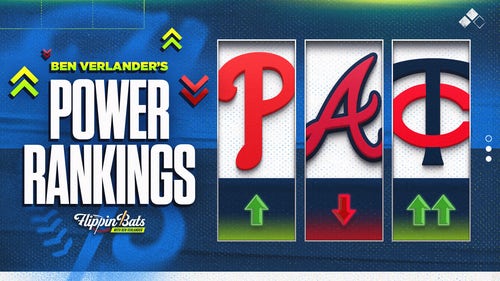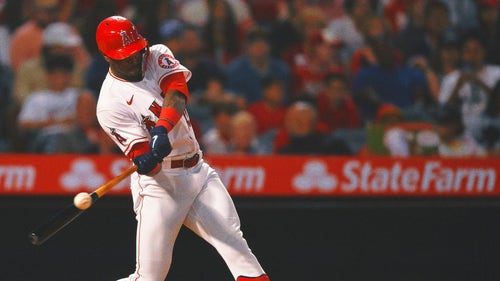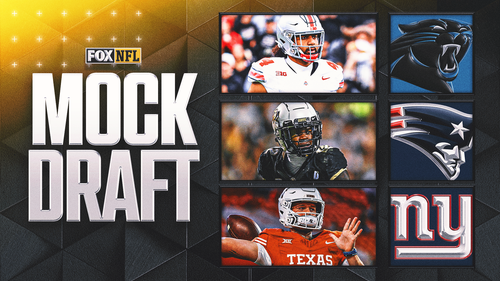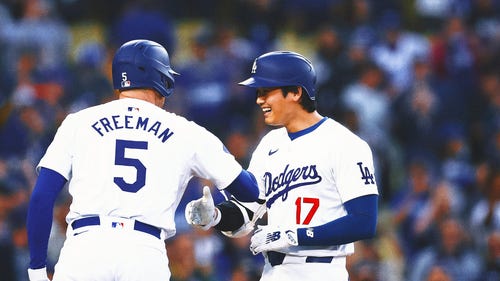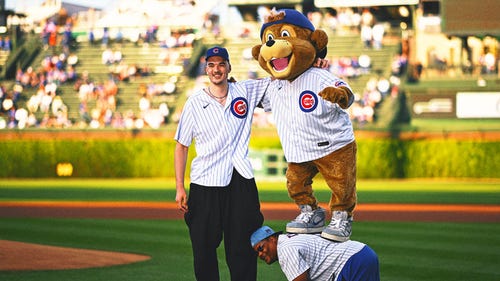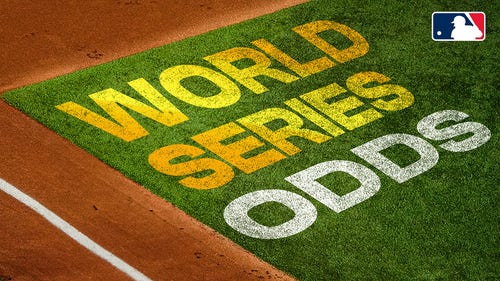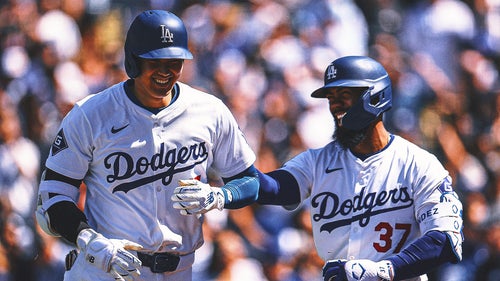
How are MLB’s slowest pitchers handling the pitch clock?
Beyond tallying the violations, it’s impossible to know how much MLB’s new pitch timer affects a pitcher’s rhythm or success.
But it seems likely to be playing a role in at least one team’s bullpen struggles, even if it’s not easily measured or something those relievers would readily admit.
Among the Los Angeles Dodgers’ returning pitchers, Alex Vesia was the slowest to the plate last year, averaging 24.5 seconds between pitch releases with the bases empty and 27.5 seconds with runners on base, according to Statcast data. In both cases, he was among the 10 slowest qualified pitchers in baseball.
Considering it takes about six seconds between the start of a pitcher’s delivery and when he receives his return throw, we know that Vesia would have been among the 59 qualified major-leaguers last year who took more time between pitches than is allotted under the new rules, which mandate that pitchers begin their delivery within 15 seconds (20 seconds with runners on base) of receiving the ball from the catcher.
During the spring, the Dodgers tried to prepare their pitchers early by putting timers on their bullpen sessions.
"It was not good," Vesia recalled to FOX Sports this week. "I felt really, really rushed. My first spring training outing, I was nervous to go out there because I didn’t know how much the clock was going to affect me. But then after the first one, I was like, ‘OK, I can do it.’"
Like most pitchers, Vesia does not blame the pitch clock for his shortcomings this year. When he was sent down to Triple-A for 10 games last month due to his struggles on a surprisingly scuffling Dodgers bullpen, it was primarily to fix mechanical flaws with his body positioning to get more direct to the plate.
Technically, he has adjusted. He hasn’t committed a pitch timer violation this year, and he points to that fact as a reason to believe he has adapted. But it still stands to reason that the introduction of the clock could play some sort of part in explaining why Vesia — the most reliable high-leverage left-handed reliever for the Dodgers last season — has looked out of sync in 2023.
"I do feel that he felt a little sped up, which kind of played into his rhythm between pitches," manager Dave Roberts said. "He’s not making excuses; I’m basically telling you what I see."
Vesia is among the more intense pitchers in the game. He paces around the dirt. In an effort to control his adrenaline and stay calm, he utilizes breathing techniques, taking deep breaths to slow his heart rate. All of that is altered by the clock.
He enters this week with a 6.61 ERA, a number three times higher than it was either of the past two years.
"When I get the ball back and rub it up, I know I have to do it really quick," Vesia said. "I’m very conscious of the clock, where I’m looking at it probably more than anything. But then I get the sign from the PitchCom, step on the rubber and I’m like back locked in to the catcher. So, it’s just getting that tempo."
That has been a work in progress not just for Vesia but for many of last year’s slowest-working pitchers.
How are last year’s slowest pitchers adjusting?
For the most part, pitchers are delivering the ball on time.
Only 37 pitchers have committed more than two pitch-timer violations, and only five — Joe Musgrove, Chris Bassitt, Braxton Garrett, Lucas Giolito, Sonny Gray — have committed at least five infractions. None of those five were among the slowest pitchers to the plate last year, either.
Of the 10 pitchers who took the most time between pitches last year, only one, Kyle Finnegan, has committed at least four timer infractions this year. Another, Kenley Jansen, has committed three. The other eight have two or fewer violations.
But nearly all of them have seen their performances suffer.
Devin Williams is a notable exception. The fifth-slowest pitcher to the plate last year, Williams has committed two violations this year but entered Tuesday with a 0.42 ERA and 0.83 WHIP (aided by a ridiculously low .167 BABIP).
Beyond him, the results haven’t been particularly encouraging for last year’s most leisurely movers.
Giovanny Gallegos and Jansen were the two slowest pitchers in tempo last year. Gallegos’ numbers are down across the board, apart from a better walk percentage. Jansen has lowered his ERA while adding velocity this season, but he is posting the worst WHIP and strikeout percentage of his career.
Gallegos’ teammate, Ryan Helsley, was the 13th-slowest working pitcher with the bases empty last year when the All-Star closer posted a 1.25 ERA and 0.74 WHIP. This year, beyond his 3.24 ERA, his walk and hit rates are up while his strikeout rate is slightly down.
Finnegan was among the five slowest pitchers to the plate both with the bases empty and runners on last year when he compiled a 3.51 ERA and 1.14 WHIP. This year, he has a 4.56 ERA and 1.60 WHIP.
Andrew Bellatti was the sixth-slowest pitcher to the plate with no one on base last year when he posted a 3.31 ERA, 2.87 FIP and 1.32 WHIP for the Phillies. This year, he was the slowest pitcher in baseball before getting optioned with a 5.68 ERA, 5.24 FIP and 1.69 WHIP.
A.J. Minter also was among the 10 slowest pitchers to the plate with runners on base in 2022, when he was a standout in the Braves’ bullpen with a 2.06 ERA. His ERA this year is 5.93. Vesia’s struggles were already documented. It’s hard to imagine the pitch clock not playing some sort of factor.
Is the pitch timer impacting hitters and pitchers equally?
At the winter meetings, most managers expressed excitement about baseball’s new timer. They also expected some players — particularly the veterans who valued their between-pitch routines — would experience a tougher time adjusting than others.
And they weren’t just talking about pitchers.
In fact, Brewers manager Craig Counsell said he thought hitters would be challenged even more than pitchers by the new rule. He wasn’t alone:
"I think the pitching side will make an adjustment relatively quickly," Tigers manager AJ Hinch said. "The hitters are going to probably bark the loudest."
"They’ve got to be focused and looking up within eight seconds," A's manager Mark Kotsay said. "That’s going to be difficult for them to get used to."
"All that time out of the box — fixing gloves and kicking cleats and looking at the third-base coach, that’s going to speed up on them," Rockies manager Bud Black added.
Still, judging by the number of offenses, it looks like the pitchers are having a tougher time than the hitters.
There have been more than two times as many pitcher violations (413 in total as of Monday) than batter violations (169). No batter has more than three pitch-timer violations this year, and no team has more than 11 batter violations. Meanwhile, 23 teams have at least 11 pitcher violations (the Rays and Yankees are tied for the MLB lead with 21 violations apiece).
Of course, that doesn’t necessarily mean that batters are comfortable with the new rules — only that they’re not leading to a bevy of infractions.
But, teamed with the new shift restrictions, life does appear better overall league-wide for hitters this year:
Last year through June 12: .241/.311/391, BABIP: .288
This year through June 12: .247/.320/.408, BABIP: .296
Which teams are getting dinged the most?
One thing that’s clear: more infractions don’t mean more losses.
The three teams with the most pitch-timer violations (pitchers and hitters combined) all have winning records, a group that includes the best team in baseball:
Most timer violations, overall:
Most pitcher timer violations:
- TB/NYY - 21
- MIA/SF - 20
- LAA - 18
Most batter timer violations:
So, what have we learned? Overall, teams seem to be adjusting relatively well to the pitch timer, which is doing its job. The average time of a nine-inning game this year is two hours and 37 minutes, the quickest that games have been played since 1984.
Most pitchers don’t have more than a couple violations. Hitters are getting dinged at an even lesser rate, and the benefits to them with the new shift rules seem to outweigh any disruptions to their pre-pitch routine.
But things get more complicated when trying to evaluate pitcher performance, particularly with this small of a sample size and the general year-to-year volatility among relievers. It’s difficult to know with any certainty how directly the pitch clock is leading to poor pitching.
Still, it’s been a tough go thus far for many of last year’s slowest operators.
"It’s different," Vesia said. "But at the same time, we have to do it. It’s being able to adapt."
Rowan Kavner covers the Dodgers and NL West for FOX Sports. He previously was the Dodgers’ editor of digital and print publications. Follow him on Twitter at @RowanKavner.






































































































































